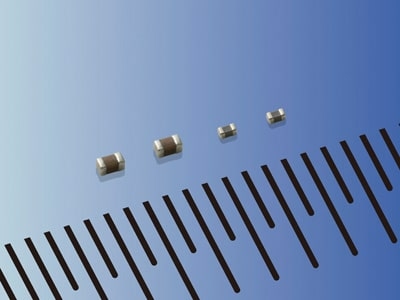source: Kyocera news
Kyocera Corporation (President: Goro Yamaguchi) today announced that it has developed multilayer ceramic capacitors (MLCCs) with industry-leading capacitance for use in telecommunication equipment including smartphones. The new 4.7μF MLCC in a 0201 case size and the 0.47μF MLCC in a 01005 case size deliver double the capacitance of the conventional 0201 and 01005 MLCCs while maintaining the same sizes enabling greater device functionality in a smaller space. Both will be available on a sample basis in October 2016.
Development Background
With the development of highly functional and multiband telecommunications equipment including smartphones which require higher capacitance of MLCCs, the number of MLCCs equipped in a device is increasing year by year. Especially in smartphones, where demand for higher functionality and longer battery life keeps rising, manufacturers must install a greater number of components without reducing battery space. As a result, engineers are demanding higher capacitance from MLCCs in the 0201 and 01005 case sizes, which are widely utilized in these devices. The proliferation of IoT (Internet of Things) devices is also accelerating this trend.
Product Features
With more than doubled the capacitance of the conventional 0201 and 01005 sizes, these cutting-edge MLCCs enable customers to reduce the number of components equipped in a device and reduce space which contributes to downsizing of devices and enhancing functionality. Kyocera achieved the world’s highest capacitance* for these sizes of MLCCs through a stable multilayer structure made by reducing the thickness of the dielectric material using Kyocera’s nanomaterial technology and highly accurate processing technology. Kyocera will continue to expand its business by developing MLCCs with high capacitance for highly reliable devices.
| 0201 size MLCC | 01005 size MLCC | |
| Product name | CM03X5R475M06A | CM02X5R474M06A |
| Size | 0.6×0.3×0.3mm | 0.4×0.2×0.2mm |
| Characteristics | X5R (EIA) | X5R (EIA) |
| Capacitance | 4.7μF | 0.47μF |
| Tolerance | M (±20%) | M (±20%) |
| Rated voltage | 6.3V DC | 6.3V DC |
| Production facility | Kagoshima Kokubu Plant (Japan) | Kagoshima Kokubu Plant (Japan) |

































